Cattails: Swamp Supermarket
The United States almost won WWII with cattails.
No green plant produces more edible starch per acre than the Cat O’ Nine Tails; not potatoes, rice, taros or yams. Plans were underway to feed American soldiers with that starch when WWII stopped. Lichen, not a green plant, might produce more carbs per acre. One acre of cattails can produce 6,475 pounds of flour per year on average (Harrington 1972).
Two species of cattails are common in North America today. One is Typha latifolia (TYE-fuh lat-ih-FOH-lee-uh) the other Typha angustifolia (an-gus-tee-FOH-lee-uh.) Typha is from Greek and means “marsh” — now you how “typhoid” got its name and Typhoid Mary. Latifolia mean wide leaf, angustifolia means skinny leaf. Besides that difference, the T. latifolia likes shallower water, the T. angustifolia deeper water, but it is not unusual to find them living side by side and also crossbreeding — L’angustifolia perhaps. Cattails get their name from their mature brown cylindrical flower spikes. When I was a kid we used to used the dried spikes as torches while skating in the winter time. The end of season fluffy “tails” make excellent tinder and the Indians used them insulation, mattresses and absorption.
There is so much to know about cattails that a book could be written just about them. First, no other plants in their mature stage look like the cattail, so it is difficult to misidentify. Younger plants can be misidentified with three toxic ones so always look for last year’s classic growth to confirm you have found cattails. Cattail are oval at the base, not flatish. They are also very mild tasting and without much aroma meaning if what you think you’ve got is a cattail and it is strongly flavored and or aromatic — not counting the smell of mud — you’ve got the wrong plant.
It is said that if a lost person has found cattails, they have four of the five things they need to survive: Water, food, shelter and a source of fuel for heat—the dry old stalks. The one item missing is companionship. Of course, the other thing to point out is that no matter where the water flows, down stream is civilization in North, Central and South America. Remember that when you are lost in the Americas. This does not hold true in Africa or Siberia. Many rivers in Africa are largest near their source then dry up as the water is used or evaporates. In Siberia rivers flow north towards the uninhabited arctic.
One Boy Scout motto is “You name it and we’ll make it from cattails!” Cattails are the supermarket of the wilds. The young cob-like tips of the plant are edible as is the white bottom of the stalk, spurs off the main roots and spaghetti like rootlets off the main roots. They have vitamins A, B,
and C, potassium and phosphorus. The pollen can be used like flour. I like their convenience as a trail nibble, or canoe nibble as it were. Just pull on one and where it pulls from the stalk there’s usually a tasty bite or two. I think the best part, though, are the new shoots off the main root. They’re start out looking like an alligator’s tooth then a pointed hook three or four inches long. The roots themselves need some processing and I’ll get to them in a moment.
Cattails have a surprising function and history. The spread of cattails in a body of water is an important part of the process of open water being converted to marsh then dry land. They are native to both North America and Europe. In Europe cattails are called bulrushes or greater reed mace. They’re first mentioned — meaning mentioned in writing — in the United States in the 1830s and at that time were only found along the Atlantic seaboard and the Gulf of Mexico excluding Texas. They weren’t even reported in places like Wisconsin until after World War I. They weren’t a significant plant in the Dakotas until the 1960s. The native cattail, Typha gracilis, seems to have all but disappeared, hybridizing with the European version to form the two species mentioned here. Eastern natives used cattails extensively, not only for food, but for hemp and stuffing. In fact, one Indian word for cattails means “fruit for papoose’s bed.” The fluff was used in diapers and for menstruation.
Like most aquatic plants in the area the cattail is also home to a beetle grub that fish like. On a green cattail look for an outer leaf that is going brown at the bottom of the leaf and main stalk. You will find a grub, actually the larval form of an Arrowhead Beetle, of the Listronotus genus. The size will vary but they do grow big enough for a small hook and fish love them. As a weevil the grub is also probably edible by humans but I haven’t got around to trying one. You can find the same grub in the tops of bulrushes and wapato.
As mentioned earlier, cattails are the champion of starch production. The way you get the starch is to clean the exterior of the roots and then crush them in clean water and let them sit. The starch settles to the bottom then one pours off the water. It may take several drain and settle sessions get rid of the fiber. I sampled the starch raw once and got a bit of a stomach ache. Once you have just the starch it is excellent for cooking as you would any flour. Getting starch that way is quite labor intensive. Here are three other ways to get to the root starch:
Dry the peeled roots (peel roots while they are wet–they are difficult to peel when dry). Chop roots into small pieces, and then pound them wtih a little water. When the long fibers are removed, the resultant goup powder can be dried and used as flour. The roots also can be boiled like potatoes then the starch chewed out (spitting away the fibers) or you can also roast the root in a fire until the outer spongy core is completely black. Then chew the starch off of the fiber. Don’t eat the fiber. It will give you a stomach ache. I know from personal experience. The advantage of the latter method is no pots or pans are needed. If you have fire and a pond you have a nutritious meal. You can also put the roots on the barbecue.
Lastly, cattails, Typha latifolia, is suspeced in the fatal poisoning of several horses in Indiana, one case over 80 years ago. Symptoms included stiffness, disinclination to move, profuse perspiration, and muscular trembling.
Green Deane’s “Itemized” Plant Profile
IDENTIFICATION: Cattails grow to 9 feet; leaves are strap-like, stiff, spongy inside, rounded on back, sheathed together at base to appear “flattened” but oval; the cigar-looking “blossom” is very densely packed with tiny flowers, male flowers in top cluster, female flowers in bottom cluster. Roots grow horizontally. If there is a gap between the male and female parts of the plant it is T. angustifolia, or the narrow leaf cattail. If the male and female parts of the plant meet, it is T. latifolia, the common cattail.
TIME OF YEAR: Spikes, pollen and flowers in the spring, bottoms of stalks and root year best in fall and spring.
ENVIRONMENT: Grows where it is wet, rivers, ponds, ditches, lakes, close to shore or farther out.
METHOD OF PREPARATION: Numerous, boiled immature and mature flowers, pollen in bread, stalks as a trail nibble, root starch for sustenance, root stems shoots as vegetables. The roots can be boiled and the starch stripped or sucked off the fibers. They can be dried, the starch grated off the fibers and the starch used as flour. You can crush the roots in water, let the starch settle, pour off the water, then use the starch. Or you can but the roots on embers and roast until black, then peel the black layer off and chew or such the starch off the fibers. Also the core of the roots can be roasted until dry and used as a coffee substitute.
Scalloped Cattails
Take two cups of chooped cattail tops and put them into a bowl with two beaten eggs, one-half cup melted butter, one-half teaspoon each sugar and nutmeg and black pepper. Blend well and add slowly one cup of scalded milk to the cattail mixture and blended. Pour the mixture into a greased casserole and top with grated Swiss cheese —optional — and add a dab of butter. Bake 275 degrees for 30 minutes.
Cattail Pollen Biscuits
The green bloom spikes turn a bright yellow as they become covered with pollen. Put a large plastic bag over the head (or tail) and shake. The pollen is very fine, resembling a curry-colored talc powder. Pancakes, muffins and cookies are excellent by substituting pollen for the wheat flour in any recipe. Cattail Pollen Biscuits: Mix a quarter cup of cattail pollen, one and three-quarters cup of flour, three teaspoons baking powder, one teaspoon salt, four tablespoons shortening, and three quarters a cup of milk. Bake, after cutting out biscuits, in 425-degree oven for 20 minutes. For an even more golden tone, you may add an additional quarter cup of pollen.
Cattail Pollen Pancakes
Mix one-half cup pollen, one-half cup flour, two tablespoons baking powder, one teaspoon salt, one egg, one cup of milk, three tablespoon bacon drippings. Pour into a hot skillet or griddle in dollar, four-inch pancake amounts.
Cattail Casserole
Two cups scrapped spikes, one cup bread crumbs, one egg, beaten, one-half cup milk, salt and pepper, one onion diced, one-half cup shredded cheddar cheese. Combine all ingredients in a casseroles dish and place in an oven set to 350 degrees for 25 minutes. Serve when hot.

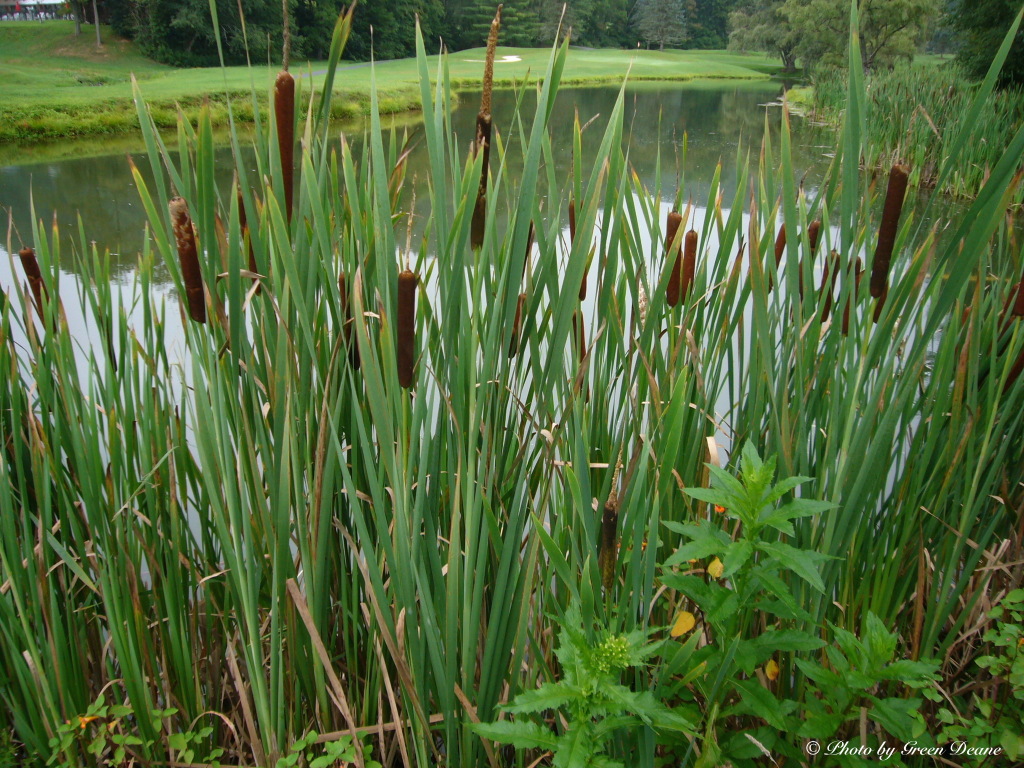
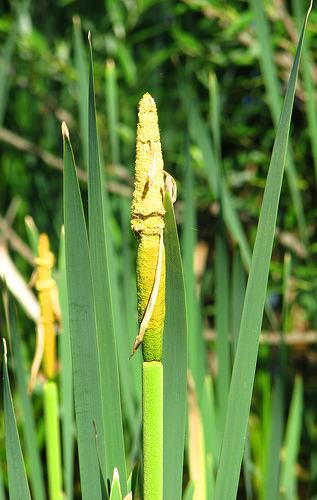

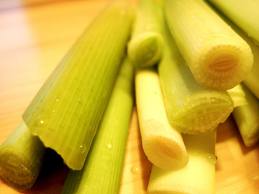
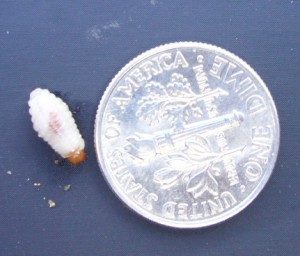
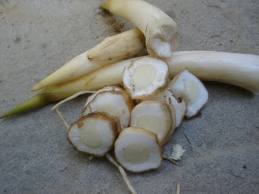

I like to use the dried out Cattail leaves for coil basket material but I would rather used Yucca leaf strips or other bark strips for the binding. Green cattail does shrink when it dries out. Its leaf strength for cordage is poor but alright for light use. Some folks use Cattail stalks for hand drills used on certain other very soft woods like Yucca stem. I am no good with the hand drill which uses up a lot of energy. The firebow or bow drill is my favorite friction method and is more efficient and I have a higher percentage of success with it. Cattail is great with loads of uses.
Excellent and very true. I find it also terrific for friction fires and a a source for ember carrying. Keep up the good work.
Hi, I just wanted to say I really appreciate this article! A friend posted the video on my facebook group (Lewis County Foragers), and I liked it so much I decided to come to your site. I can see this is going to be one of my favorite sources for information. Thank you for doing what you do so well. 🙂
Very informative!!
I liked the article, however, I wish you could show how to prepare cattails in short a video. A video recipe if you will. Also, should a person be concerned about eating these in a location that is also close to residential areas. Are there common pollutants or concerns about pollutants in cattails? I am told our town’s name is said to mean “Great Swamp”, with people in such close proximity to the cattails, should this make me nervous?
I do have one video on preparing cattails. And cattails can pick up pollutants so it is best to harvest them from wholesome water.
Hey Green Deane!
I’m wondering about your recipe for scalloped cattail. This is the only recipe I’ve found that calls for brown cattail tops. Most other sites say they are inedible – is this simply because most find the texture unpalatable? I’ve read that the green immature cattail heads are quite nutritious. Do any nutrients remain in the grown mature cattail heads?
That is a misprint. I will correct it. Use green female tops.
you can use the male green spike scraped as well.more work , but works if you have time and any.
A bit of confusion here, I think. the very top section of the spike is the male part with the pollen which falls to fertilize the lower section. In the green stage of both parts, the top is rich and corn cobby. As it begins to shed the pollen…which I do catch as much as possible..doing that today actually…the bottom which will be the part to develop into brown is also good…scraped for the caserole or nibbled off. i can see how the more mature it becomes, before pure fluff, it would be good in the idea presented here as a meatless patty. I shall try that too. anyway, very top is male, second done female which produces seeds becomes brown.
Cattails are used in many polluted water ways to filter and cleanse the water. They grow well near the dump next to the river here.
I don’t know what they retain during the filter processs so I collect elsewhere. Like anything we intend to eat consider the source, in most places it’ likely not worse than what we find int the store.
I’ve recently found a 10 acre patch unabused since the 60’s; I’m looking forward to several good trips this year.
Wow. 10 acres where? I’m lucky to find a tenth of an acre here in the Willamette valley here in Oregon. I’ve heard there are much more to the south near Eugene. Where are you located? I heard there are dense and extensive areas just south of the Great Lakes.
The largest fresh water cattail marsh in the world is in Wisconsin. Horicon marsh. Home to marsh birds, muskrats, migrating canada geese,etc. North of Milwaukee area and west of Lake Michigan.
Green Deane –
We talked about this a bit in the forum, but I wanted to let people know that I figured out a way to use brown cattail – and make it taste really good – by making tweaks to your the scalloped cattail recipe.
As we discussed, the challenge of cooking with brown cattail, is the texture. However, it’s exactly that funky texture that makes it a perfect for a veggie meat substitute! After mixing with eggs and spices, blending and baking, the fibers bind in a way that really mimics muscle texture.
I used mine to make vegetarian pulled pork BBQ tacos and my whole family, including my 10 year old, loved it!
The recipe I whipped up is here if anyone’s interested! ( http://www.smartlivingnetwork.com/food/b/gastronomics-foraged-cattail-vegetarian-pulled-pork-barbeque-recipe/ )
I used to be a fan of Euell Gibbons years ago. He is gone now but not forgotten. I’m sure that he wrote about preparing the brown tops (before the fluff bursts out) like a corn on the cob: buttering, cover w/ foil, and barbecue or baking them. Has anyone tried that?
Yes, while they are green that is done often. Some folks are using the brown fluff in some recipes.
yes i have, I also was a fan of Euell Gibbons, you can boil or roast the green tops and eat them just like corn, very tasty!
I heard that in Vietnam cattails are used for cooking like we use celery. Is that correct?
They might be but they are milder in flavor than celery.
Hello, trying cattail root for the first time as I type. I have a small pot boiling right now and It smelled nice I sipped the water and decided to add some salt, I think it would make an excellent broth for soup.
So far a succesful food experiment.
Hi
I would like to experiment with some cattail starch. I am working on artwork using only natural local sources for ingredients. Cattail paper is one of my ventures…I can gather my own starch when the ground thaws. Everything is a bit bound up up here in Wisconsin. Can anyone tell me where I could get a pound or so?
Cattails are my children’s favorite wild plant food. They’re now in the 40’s but still seek out cattails every spring. If you intend on trying the roots, bring along a back-hoe. The roots are deep and you’ll generally be digging in mud. Euell Gibbons is the best source for harvesting and preparing information. Judging by the comments before me, some of the commenters do not have a knowledge of the plant. The top part of the flower, before it emerges from the leaves, is the best part of the plant. It will later release pollen. The bottom part of the flower is the fall cattails that people collect for flower arrangements…not so good to eat. The shoots and part of the stalk are delicious. And if you live in Wisconsin you have a supermarket in almost every marsh. Did you know that Horicon Marsh is the largest cattail marsh in the world?
Phil G
I remember having cattails on a camping trip to Mt. Washington, when I was a kid; however, I don’t recall how they were prepared. I want to say we cooked the tails (er, flowers) like corn on the cob, and then served them up with butter, salt, & pepper.
Does that sound like it might work, and how would I know when my tails are done cooking?? …now, that I’d be doing the cooking by myself.
I am interested in growing cattails for their starch, please advise the best way to grow them and which variety would be better and safe.
What yield should one expect. I am based in Malawi Africa. We have the best terrain. Can you reply on my email.
A new plant has recently begun growing in my pond. I’m not sure if its cattail or not but it is spreading very rapidly. It hasn’t sent up any flower stalk yet so I don’t know what it is for certain. The leaves don’t stand up straight. They flop over instead. From all the cattails I’ve ever seen, the leaves stick up mostly. Also, there’s really nothing for roots. Just a jumble of fine roots. I can’t find anything that looks like it might be big enough to be starch bearing. I need to start pulling this plant up because it will take over my pond in 5 years easily.
love tho
I love cattails
At, what time of the year, can you take the “Cigar” and make the Cattail Casserole? “Two cups scrapped spikes” It is winter, here in Maine and I see the Fluff in the swamps around here. Can I go in there and start collecting?
Yes, but I think that is young folks trying to find ways to use the fluff. It really doesn’t taste or digest that easily.
I read this article and immediately went and got some cattail roots, crushed them with water and left it over night the starch settled out, it seems to be working fine.
I read so much info on cattail flour , can it be bought , catalog ? who processes it and knowing over 6,000 lbs per acre ? 1 573 707 2322
I have cooked the hearts and young shoots like asparagus. They have a similar flavor. The roots like fries or potatoes. The young flower. The brown flour or fluff if ground up can be used as flour. Not self-rising. The roots charred over fire as a replacement to coffee. Good Hunting.
how do i eat young cattail in the spring?
One thing you might want to caution folks about is to check the water closely before gathering cattails – ‘gators and cottonmouths often frequent the same bodies of water as cattails, and an encounter with either would be unfortunate.
Just wanted to share this.
On this inventory of an ancestors estate done in 1701 are listed two “Cattail Beds” This family lived in the swampy area near Rappahannock Creek in the Northern Neck of Virginia.
Virginia, Wills and Probate Records, 1652-1983
Richmond (County) Will and Inventories, Vol 1-3, 1699-1717
Ancestry.com Microfilm
Frame 30/339 Inventory of Estate of Thomas Newman, April 14th 1701: John Crask, Edward
Newton, John ? witnesses
In Obedience to ye worships order ___ the ____ at the house of Tho. Newman Sr and there inventoried and appraised the estate of the said Tho. Newman as followeth
The crops of Tobacco 3920
A Parcell of Hoggs 1280
One old cow and calf 500
One four year old Mare 400
Two five year old ___ 400
One yearling 100
One four year old bull 900
One Mare and colt 800
Two ewes and two lambs 300
One man servant Nathaniel Warren, 2000
three years and seven months to serve at
One feather bed and bolster, one pair of 1700
blankets one pair of sheets, one rugg,
one pillow and bed stand
One feather bed tick filled with flocks and 650
feather Bolster, and two old ruggs and one
pair of blanket
One cattail bed and bolster, two pillows, 300
one rugg and one pair of blankets
One cattail bed and bolster, two pillows, 200
one rugg and one pair of blankets
One feather bed and bolster, three old 220
blankets and one old rugg
Four pewter dishes at 288
Three plates at ___ plates 027
One Bason at ____ 035
Two old pottangers at 16
One tankard 20
One salt collar 15
A parcel of tinn ware 18
Five old spoons, one grator and one drinking glass 10
One small looking glass 8
One warming pan 80
Two old ___ 950
Two iron potts and pot hooks 250
One old fry pan and one split 60
One box iron and one old ___ cutting knife and
small cup 40
One hundred fifty ____ wright nails 18
One high bed stand and one ___ bed stand 150
Four old napkins and a table cloth 30
Two yards and half of ticking at 30
________ of old __
___ cannot read ____ __
________chest __
__ milk ___ five old trays and butter 0142
I’ve just stuffed my first seat cushion for an antique dining chair reupholstery project. I’ve got more fluff harvested, but it must take a field of cattail to fill a bed.
Thanks for posting these details, Wade. I know it’s possible and have a new goal!
I have a question about cattails? Lets just say I Pick some on monday for lunch and dinner. can I pick and some for tuesday as well. I guess what Im asking is after being picked how long do I have to eat it before it goes bad?
Like most roots they can be stored for a while.
fascinating information; I really want to try Acorn Flour; very interesting;
A Austrian Bushcraft Queen “Survival Lilly”, has many videos using these,and many other MUST LEARN aspects of our planets outdoors.Those wanting to see it done first hand,go to her Youtube channel.She uses Birch syrup to drink,Cattails for everything,camp bread,you name it…Survival Lilly..She tests the outdoors in all regions,all over the world.I been a avid outdoorsman my whole life and I sure still learned alot from her…
If you name one of the cattails and put a hat on it, and talk to it, then you’ll have companionship too
This is fascinating! Thank you! I live in Phoenix, AZ and of all things, cattails began to grow in my herb garden! I must have brought them in on my shoes from a hike!
In a native plants class we made cattail mats to sit on. The leaves are hollow in middle that is great insulation and comfortable to sit on.
When I was younger growing up in Fenwick Island Delaware, we lite the end of the brown ones and stuck them in the ground outside near our picnic table where we sometimes ate our boiled crabs and had cookouts.
The cattail when burned would keep misquotes away. 😎🌴🌴